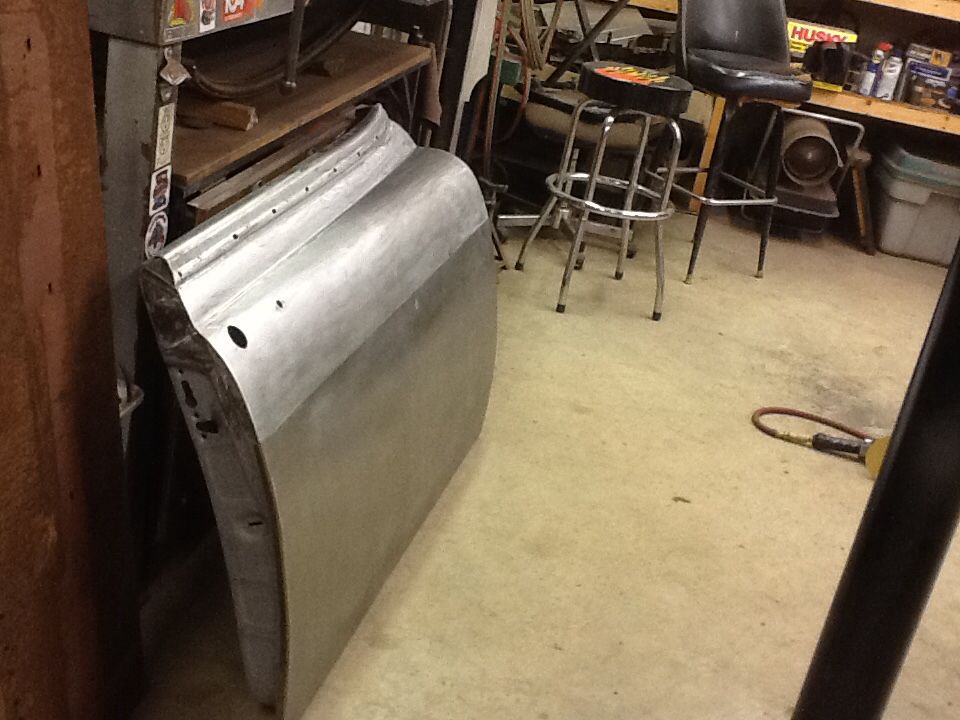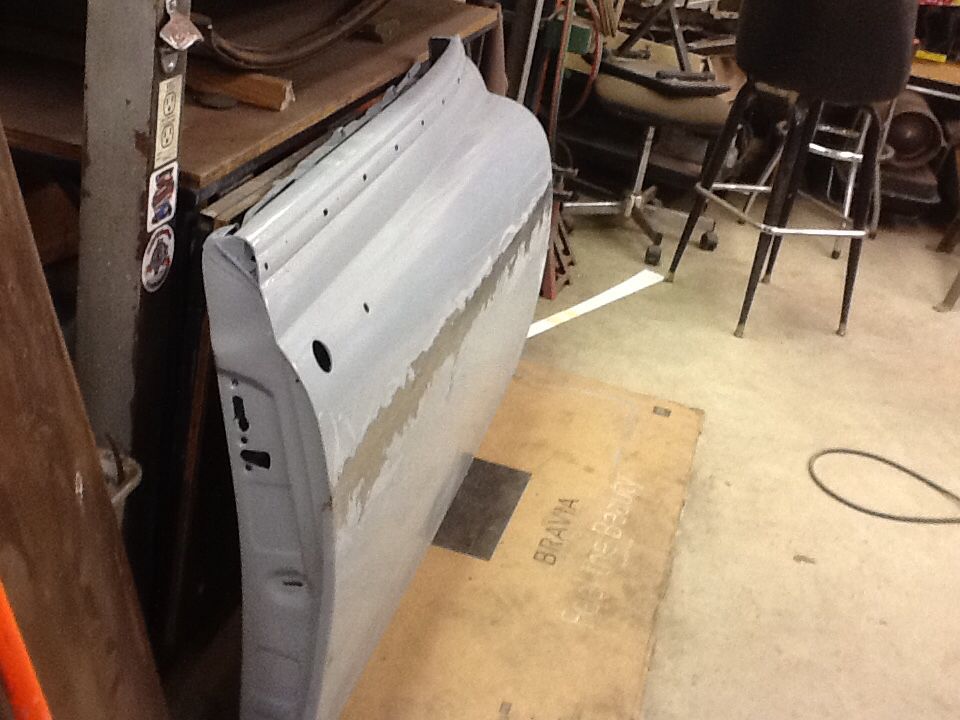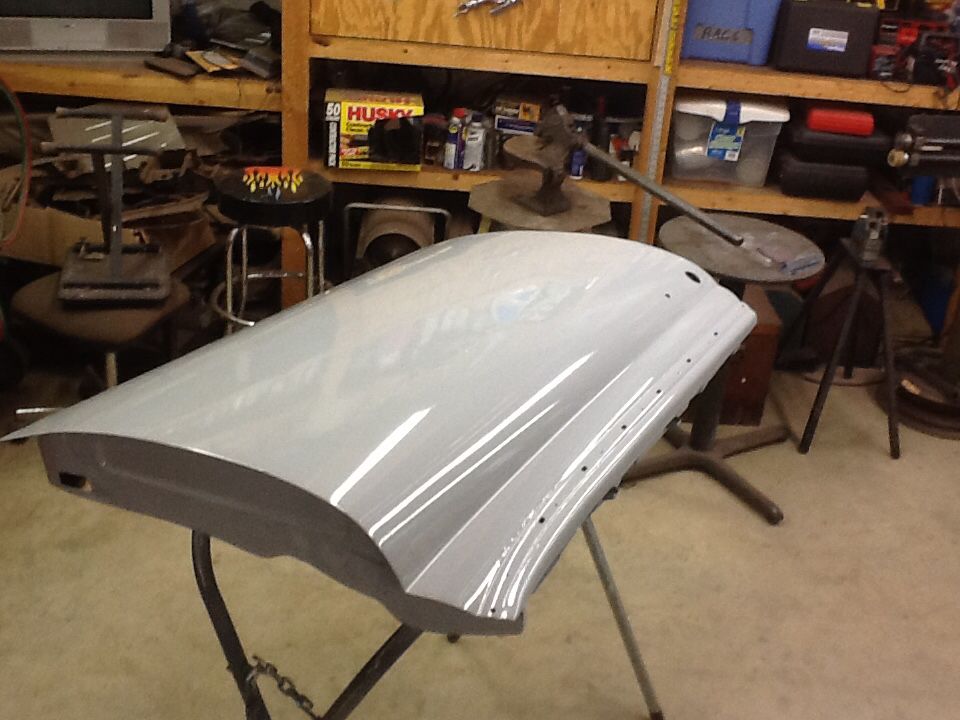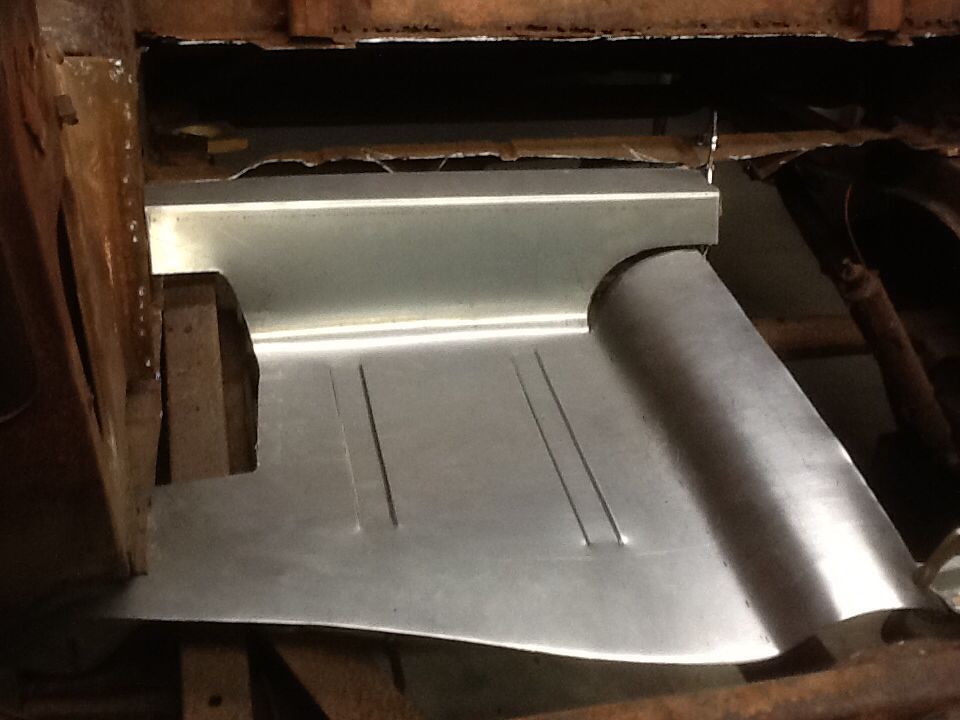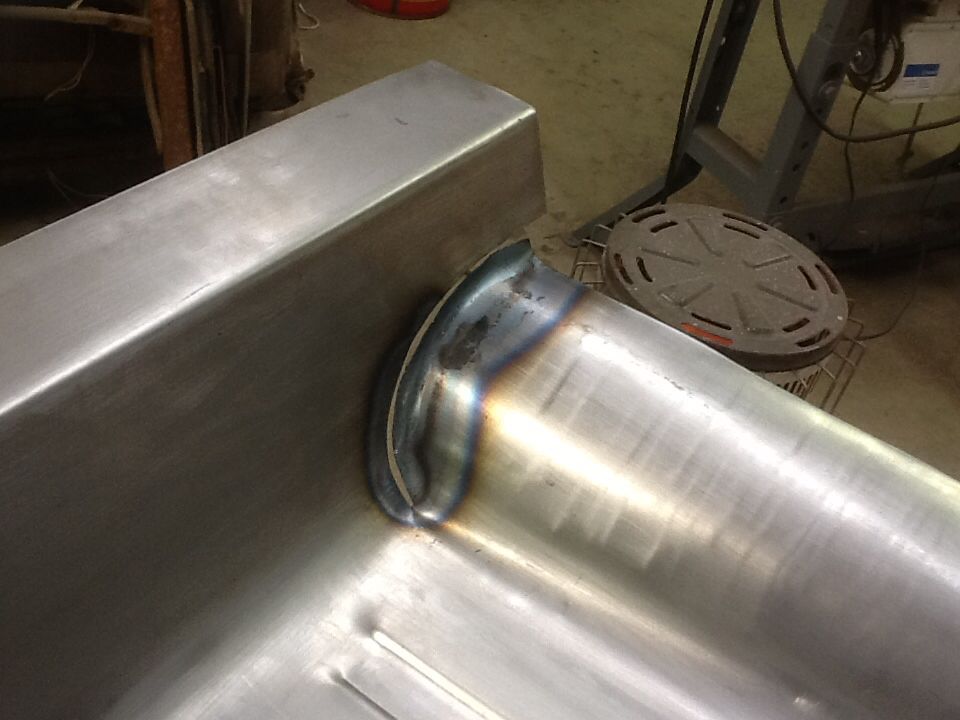Sparky
Promoted Users
I’m looking to get better at oxy/Ace fusion welding in sheet metal, and have a door with a skin that has multiple damage in many areas, but I will focus on one area for now. It has rust holes on the bottom corners, and old repair in the middle I found under the filler, and this leading edge damage. I believe a complete new door skin would be the proper repair, but I want to use this to learn some lessons.
This damage is full of thick weld on top of weld, and has limited access to the back side for a dolly.

A thin pancake dolly can just barely fit in behind the area due to the inner structure.

I made up a template, cut out a repair patch of the same thickness sheet metal which was approximately .036” 20 ga. Bent the ridge, and used a series of light hammer blows to put a slight crown it it to match the door. I’m following the techniques in David Gardiners DVD.

I followed Roberts suggestion I saw somewhere on making sure not to have 90 degree turns to prevent concentrated hot spots. I scribed the outline of the patch, and cut out the damage with a thin cutoff wheel, then used a dremel to sneak up to the scribe line.


Using magnets to hold it I began to tack it in with the torch after I practiced on some same gauge metal, using a small smith torch I picked up on eBay. I only had a large body torch, this one is half the size and a lot lighter. Of course the first tack I blew through the thin metal.

 I hammer/dolly each tack as this thin metal was distorting very easy and quickly. I made it all around following this sequence with a few blow outs.
I hammer/dolly each tack as this thin metal was distorting very easy and quickly. I made it all around following this sequence with a few blow outs.

after I had the metal relatively straight, I proceeded to fusion weld from right to left, in one pass as the DVD shows. the black areas are where I needed to add filler rod.

This really distorted the metal and took about 2-3 hours of hammer/dolly and then slapper or Flipper as David calls it on the dolly. It left me with two high spots I need to shrink, one on the top half above the welded area (1 o’clock), and one on the lower half below the welded area (4 o’clock).
I kept filing the welded as I worked the metal to see the highs and lows. Here is where I’m at. Today ( right now) I’m going to shrink the two high spots with the torch, dolly, and hammer.
 This is for a 68 Firebird, and obviously there are door skins available, but if this was for a more obscure car, with no aftermarket metal available would you have done this differently? I don’t think I can really metal finish it completely due to the limited access to the back side. I would really need to cut out part of the inner structure to get at all of the repair near the edges. After I get the high spots down, I should be under an 1/8” of filler to cover it. I appreciate any views on what I did, or should have done, it’s how I learn.
This is for a 68 Firebird, and obviously there are door skins available, but if this was for a more obscure car, with no aftermarket metal available would you have done this differently? I don’t think I can really metal finish it completely due to the limited access to the back side. I would really need to cut out part of the inner structure to get at all of the repair near the edges. After I get the high spots down, I should be under an 1/8” of filler to cover it. I appreciate any views on what I did, or should have done, it’s how I learn.
thanks
Chris
This damage is full of thick weld on top of weld, and has limited access to the back side for a dolly.
A thin pancake dolly can just barely fit in behind the area due to the inner structure.
I made up a template, cut out a repair patch of the same thickness sheet metal which was approximately .036” 20 ga. Bent the ridge, and used a series of light hammer blows to put a slight crown it it to match the door. I’m following the techniques in David Gardiners DVD.
I followed Roberts suggestion I saw somewhere on making sure not to have 90 degree turns to prevent concentrated hot spots. I scribed the outline of the patch, and cut out the damage with a thin cutoff wheel, then used a dremel to sneak up to the scribe line.
Using magnets to hold it I began to tack it in with the torch after I practiced on some same gauge metal, using a small smith torch I picked up on eBay. I only had a large body torch, this one is half the size and a lot lighter. Of course the first tack I blew through the thin metal.
after I had the metal relatively straight, I proceeded to fusion weld from right to left, in one pass as the DVD shows. the black areas are where I needed to add filler rod.
This really distorted the metal and took about 2-3 hours of hammer/dolly and then slapper or Flipper as David calls it on the dolly. It left me with two high spots I need to shrink, one on the top half above the welded area (1 o’clock), and one on the lower half below the welded area (4 o’clock).
I kept filing the welded as I worked the metal to see the highs and lows. Here is where I’m at. Today ( right now) I’m going to shrink the two high spots with the torch, dolly, and hammer.
thanks
Chris

